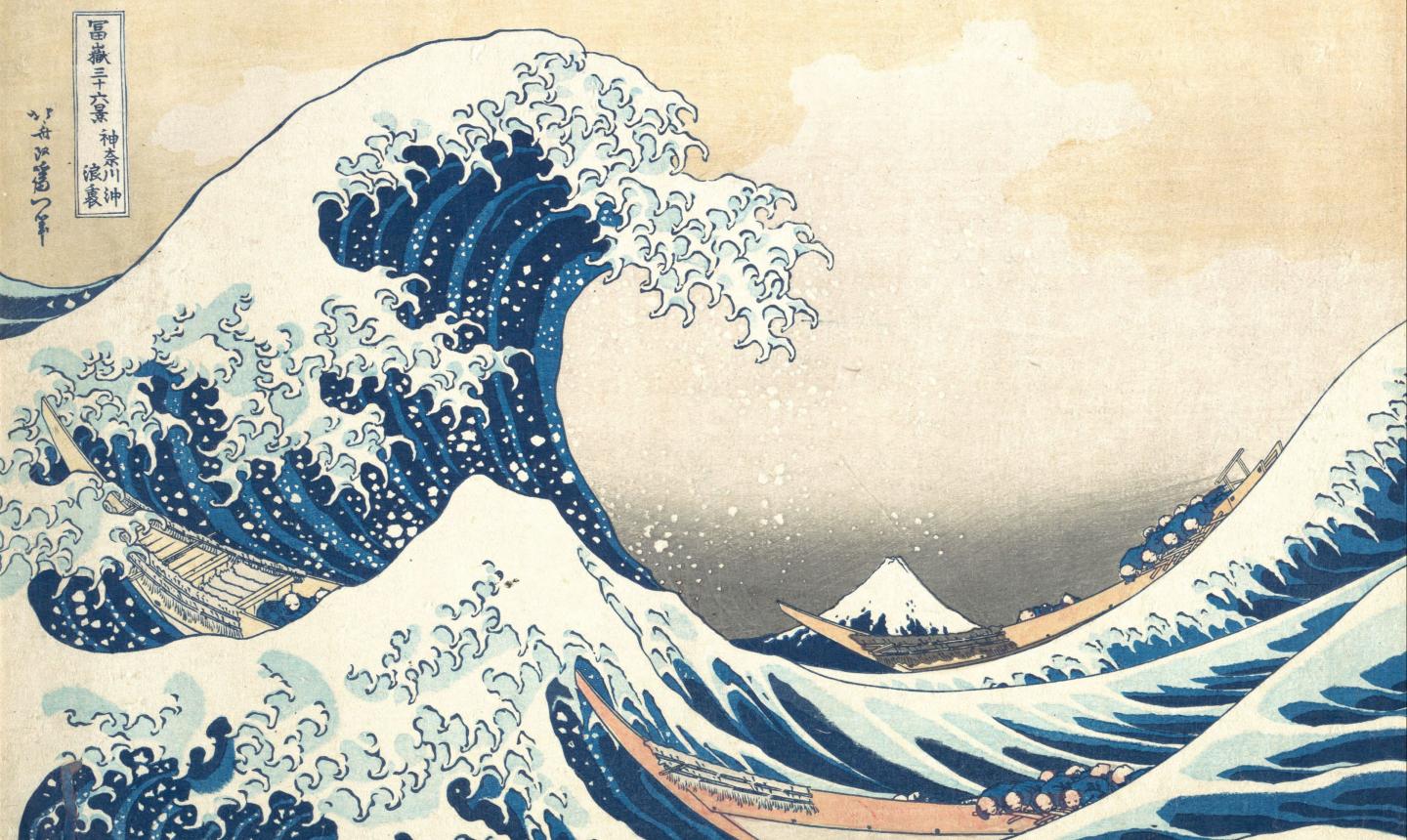Actuellement fermé
6, place d'Iéna
75116 Paris
France

La Grande Vague est une des estampes de la série des "Trente-six vues du Mont Fuji" de Katsushika Hokusai (1760-1849), un des maîtres du genre de l'ukiyo-e, un terme japonais qui signifie "images du monde flottant".
Dans cette gravure pourtant, le Mont Fuji est réduit par l’effet de perspective à l’arrière-plan et apparait très lointain, tandis que l’écrasante vague enveloppe la composition.
Notre regard est aspiré par la vague. On confondrait presque son écume avec la neige de la montagne. Dans cette estampe, qu'est-ce qui est terre, et qu'est-ce qui est eau ?
La vague a un aspect monstrueux et menaçant. Ici, les rameurs tentent en vain de retenir le flot de la mer déchainée.
Ces trois bateaux de pêches sont probablement des oshiokuri-bune, qui étaient utilisés pour fournir Edo, alors capitale du Japon et forte de plus d’un million d’habitants, en denrées de base comme le poisson, le riz ou les légumes.
Les estampes étaient produites à de nombreux exemplaires et n'étaient pas conçues pour durer. Leurs couleurs se dégradaient donc rapidement à la lumière.
C'est ce qui explique que nous exposons les estampes 3 mois environ, avant qu'elles ne partent se reposer dans nos réserves pour une durée de 3 ans.
"Sous la grande vague au large de Kanagawa" est plus qu'une estampe, elle est devenue une icône de la culture populaire.
Depuis la fin du 19ème siècle, "La Grande Vague" n'a cessé de nourrir notre imaginaire, de Claude Monet aux très nombreux produits dérivés qu'elle orne ou qu'elle inspire.
Son impact est si marquant qu'elle sera représentée sur les billets de banque japonais de 1000 yens à partir de 2024.
La vague est composée de plusieurs nuances de bleu, dont le bleu de Prusse, une technique très novatrice à l'époque de sa création au début des années 1830.
Conformément à la technique utilisée pour créer une estampe, chacune de ces nuances nécessitait une phase d’impression qui venait se superposer sur la précédente. D'ailleurs, les toutes premières estampes, originaires de Chine, étaient monochromes !